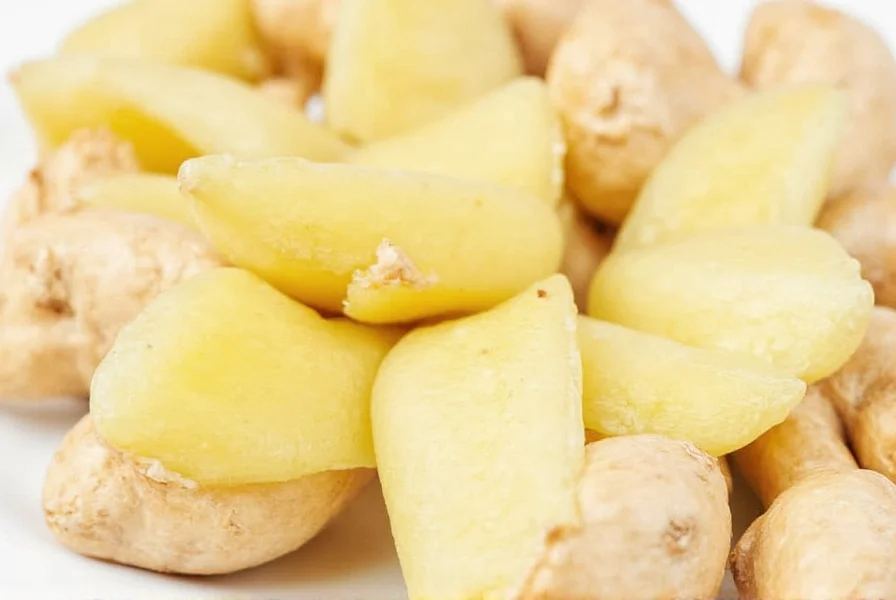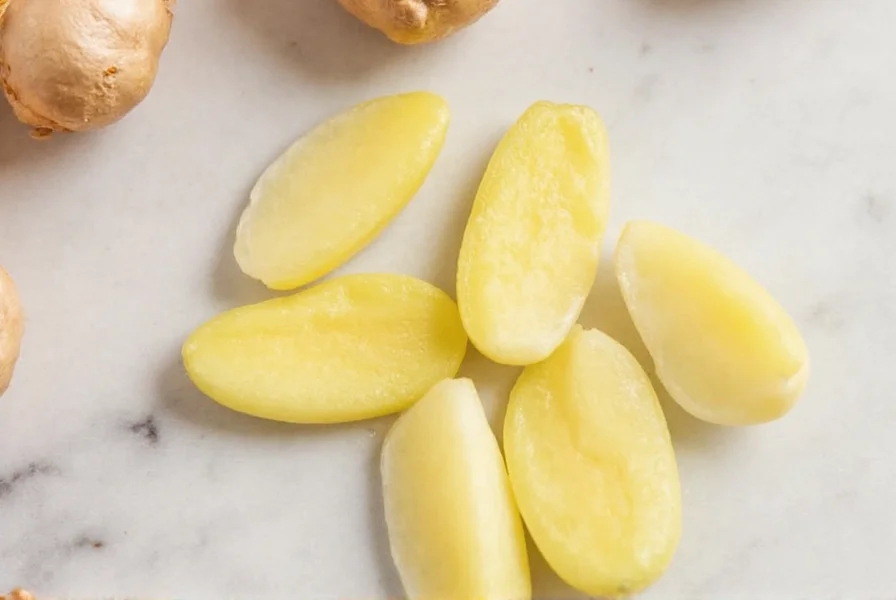Why Proper Ginger Peeling Matters
Peeling ginger correctly preserves maximum usable flesh while removing the tough, fibrous skin. Many people waste up to 30% of the ginger root using improper techniques. The skin contains dirt and potential pesticides, but removing too much flesh wastes valuable gingerol—the compound responsible for ginger's health benefits and distinctive flavor.
Three Effective Methods for Peeling Ginger
While the spoon method reigns supreme for most home cooks, different situations call for different approaches. Let's examine each technique's effectiveness for various ginger types and kitchen setups.
1. The Spoon Method (Best Overall)
This surprisingly effective technique works because the spoon's curved edge follows ginger's natural contours. Unlike knives or peelers that remove substantial flesh, a spoon glides between skin and flesh.

Step-by-Step Spoon Peeling Instructions
- Rinse the ginger root under cool water to remove surface dirt
- Select a metal spoon with a sharp edge (tablespoons work best)
- Hold ginger firmly in one hand, spoon in the other
- Scrape the spoon's edge against the ginger at a 45-degree angle
- Work under running water for better grip and easier cleaning
- Rotate ginger to access all sides and knobby areas
2. Vegetable Peeler Method (For Smooth Ginger)
When dealing with younger, smoother ginger with thinner skin, a standard Y-shaped peeler can work efficiently. This method shines when preparing large quantities of uniform ginger pieces.
When to Choose a Peeler
- Ginger roots are relatively straight and smooth
- You need consistent, thin slices for recipes
- You're processing multiple ginger roots at once
3. Knife Method (Traditional Approach)
The knife technique requires more skill but gives precise control. Professional chefs often prefer this method for its speed once mastered.

Proper Knife Technique
- Use a small, sharp paring knife
- Cut a thin slice from one end to create a stable base
- Place ginger upright on the cut surface
- Working from top to bottom, remove skin in thin strips
- Rotate ginger and repeat until all skin is removed
- Pay special attention to crevices between knobs
| Peeling Method | Time Required | Flesh Preservation | Best For |
|---|---|---|---|
| Spoon Method | 2-3 minutes | Excellent (95%+) | Knobby ginger, small quantities, no special tools |
| Vegetable Peeler | 1-2 minutes | Good (85-90%) | Smooth ginger, larger quantities |
| Knife Method | 3-4 minutes | Fair (75-80%) | Experienced cooks, precise cuts needed |
Pro Tips for Perfect Ginger Every Time
Master these professional techniques to maximize your ginger's potential:
Choosing the Right Ginger
Select firm roots with smooth, tight skin and minimal wrinkles. Heavier pieces indicate higher moisture content and better freshness. Avoid roots with soft spots or visible mold.
Storage Solutions for Peeled Ginger
Store peeled ginger in an airtight container with a damp paper towel in the refrigerator for up to 3 weeks. For longer storage, freeze peeled ginger pieces in a single layer before transferring to freezer bags. Frozen ginger can be grated directly without thawing.
What to Do With Ginger Peel
Don't discard the peel! It has multiple uses:
- Simmer in water for 20 minutes to make ginger tea
- Add to vegetable stock for extra flavor
- Compost for nutrient-rich soil amendment
- Create natural cleaning solution with vinegar
Common Ginger Peeling Mistakes to Avoid
Avoid these frequent errors that waste ginger and compromise your dishes:
- Using a dull knife - removes too much flesh and creates uneven pieces
- Peeling before washing - spreads dirt across the surface
- Removing too much flesh - wastes valuable gingerol-rich tissue
- Using a cheese grater - creates excessive waste and potential injury
Special Considerations for Different Ginger Types
Mature ginger has thicker, tougher skin requiring more careful peeling, while young ginger (spring ginger) has such thin skin it often doesn't need peeling. When working with preserved ginger (crystallized or pickled), follow package instructions as the peeling process differs.
Frequently Asked Questions
Can you eat ginger skin?
Yes, young ginger skin is thin enough to eat, but mature ginger skin is fibrous and unpleasant to chew. Most recipes call for peeled ginger to ensure proper texture, though the skin contains beneficial compounds. If using unpeeled ginger, scrub thoroughly to remove dirt and potential pesticides.
Why is my ginger so hard to peel?
Hard-to-peel ginger typically indicates older, drier roots with thicker skin. Fresh ginger should yield easily to proper peeling techniques. If your ginger feels particularly tough, try soaking it in cold water for 10 minutes before peeling, or use the spoon method under running water for better grip and easier removal.
How do you peel ginger without wasting flesh?
The spoon method preserves the most flesh by following ginger's natural contours. Hold the spoon at a shallow angle and scrape gently—don't press hard. Work under running water to see the skin removal clearly. For knobby areas, rotate the ginger rather than forcing the tool through tight spaces. This technique typically preserves 95% or more of the usable ginger.
Can you peel ginger in advance?
Yes, peeled ginger keeps well for 2-3 weeks when stored properly. Place in an airtight container with a damp paper towel in the refrigerator. For longer storage, freeze peeled ginger pieces. Frozen ginger can be grated directly without thawing, making it convenient for regular use in cooking and baking.










 浙公网安备
33010002000092号
浙公网安备
33010002000092号 浙B2-20120091-4
浙B2-20120091-4